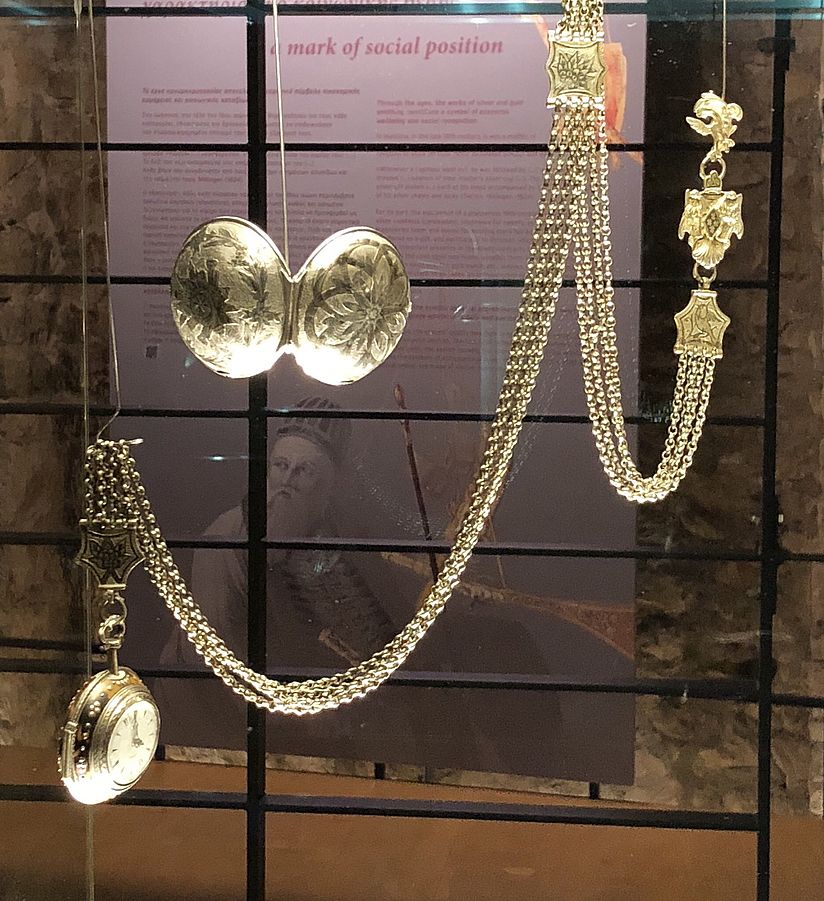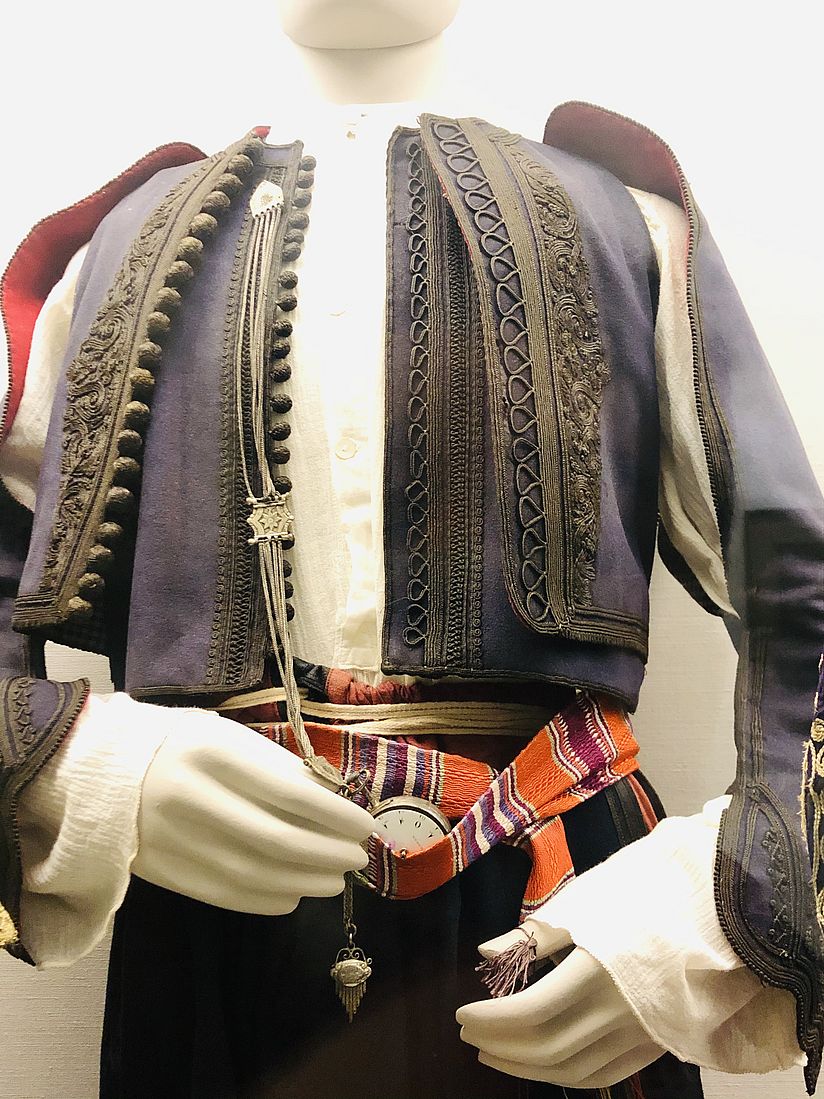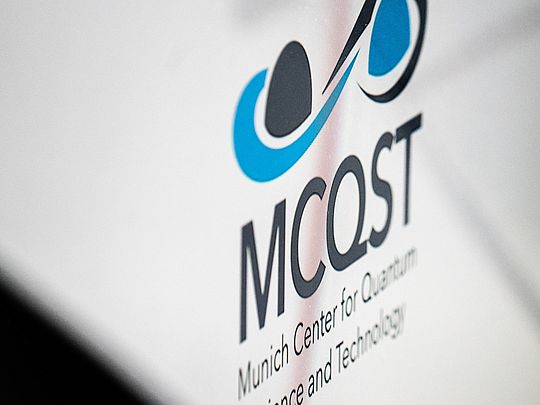
![[Translate to English:] [Translate to English:]](/assets/_processed_/8/4/csm_Lux_YagouRelaunch_Bild1_23ea178e5c.jpg)
[Translate to English:] Photo: Deutsches Museum München | Reinhard Krause
Interrelations between science, technology and society
Technology and Luxury
What is the role of technology in new consumption practices? How do novel technologies interact with fashion trends? The project explores these and similar questions for southeastern Europe during the 18th and 19th centuries.
Content
Technology and Luxury: Consumption and “popular luxury” in early modern southeastern Europe
- Interrelations between science, technology and society
Edited by
Dr. Artemis Yagou
Scholar in Residence

Ownership of a pocket watch was a mark of social distinction (exhibit from the Silversmithing Museum in Ioannina, Greece). Photo: A.Yagou | Artmis Yagou
Types of Luxury
Throughout history, luxury has manifested itself in a variety of items beyond the limits of necessity: fine wines and foodstuffs, magnificent residences, sumptuous furniture, lavish fabrics, precious jewellery, expensive watches, gadgets or instruments, extravagant cars and yachts, valuable works of art. Typically, luxury is linked with monarchs and leaders, dominant social classes and various elites. Nevertheless, the study of economic growth in the 17th and 18th centuries has led to the introduction of the concept of popular luxury. Popular luxury refers to the development and wider diffusion of desirable products that were not necessarily precious in absolute terms, but were highly sought-after for affording variety, personal choice and pleasurable use.

Pocket watches were important fashion accessories for men (mannequin from the Benaki Museum in Athens). Photo: A.Yagou
Technology and Luxury in Early Modern Southeastern Europe
During the long 18th century, novel artefacts, especially imported ones, exemplified the growing significance of pleasurable consumption in southeastern Europe. At a time of increasing mobility, portable objects in particular (such as watches) were a sign of innovation and distinction. What mattered most for users was embracing change, pursuing novelty, actively seeking diversity and fun, and experiencing sensual gratification. The project analyses this emerging phenomenon of self-empowerment through consumption.
Lectures
- Wolverhampton, Uni, »CHORD online seminars«, 26.01.2021: From England to Crete and back: Exploring the Commercial Route of an 1814 Pocket Watch
- Zagreb, Online Konferenz, »12th International Conference on Design History and Design Studies«, 16.-18.10.2020: Objects of Desire: Consumption and Popular Luxury in Early Modern Southeastern Europe.
- Cambridge, Whipple Museum, »Making it Real. Historical Authenticity in Museums and Collections in the UK, Germany, and Europe«, 3.-5.12.2019: Making it Real for Whom? Issues of Authenticity in Pocket Watches for the Ottoman Market (18th-19th c.).
- Milan, Jahrestagung SHOT, 24.-27.10.2019: Novel and Desirable Technology: Pocket Watches for the Ottoman Market (late 18th – mid 19th c.).
- Edinburgh, National Museums Scotland, »Artefacts XXIV«, 20.-22.10.2019: Hidden Diversity: A Pocket Watch with Ottoman Numerals from the Deutsches Museum Collection.
- Patras, Uni, »7th International Conference for Typography and Visual Communication: Challenging Design Paths«, 19.-21.6.2019: Reading Erotokritos: The Printed Book as Novelty, Luxury, and Inspiration.
Puclications
- Issues of Authenticity in Pocket Watches for the Ottoman Market. In: Kimmel, D.; Brüggerhoff, S. (Hg.): Museums - Places of Authenticity? Mainz 2020, S. 385-392.
- Objects of Desire: Consumption and Popular Luxury in Early Modern Southeastern Europe. In: 12th International Conference on Design History and Design Studies (Conference Proceedings), Zagreb, S. 531-539.
- Das besondere Museumsobjekt. In: Kultur &Technik 44 (2020), H. 4, S. 34-37.
- Popular Luxury in Southeastern Europe in the Long Eighteenth Century: A Case-study of Italian Ceramics and Ottoman Greek Clients. In: Journal of Early Modern History, Vol. 24 (2020), H. 4-5 (September 2020), S. 407-429.
- Novel and desirable technology: Pocket Watches for the Ottoman Market (late 18th – mid 19th c.). In: ICON (2018/2019), H. 24, S. 78-107.
Further links
Website
http://www.yagou.gr


![[Translate to English:] [Translate to English:]](/assets/_processed_/e/4/csm_Play_YagouRelaunch_Bild1_bf60a9b213.jpg)

![[Translate to English:] [Translate to English:]](/assets/_processed_/4/3/csm_Forschungsinstiut_Projekt_Evidenzpraktiken_Ehlers_Pesticides_in_Use_2859d144b5.jpg)
![[Translate to English:] [Translate to English:]](/assets/_processed_/f/4/csm_Forschungsinstitut_Projekte_Turbulenz_Eckert_IMG_0938_A_e67bbe83a7.jpg)